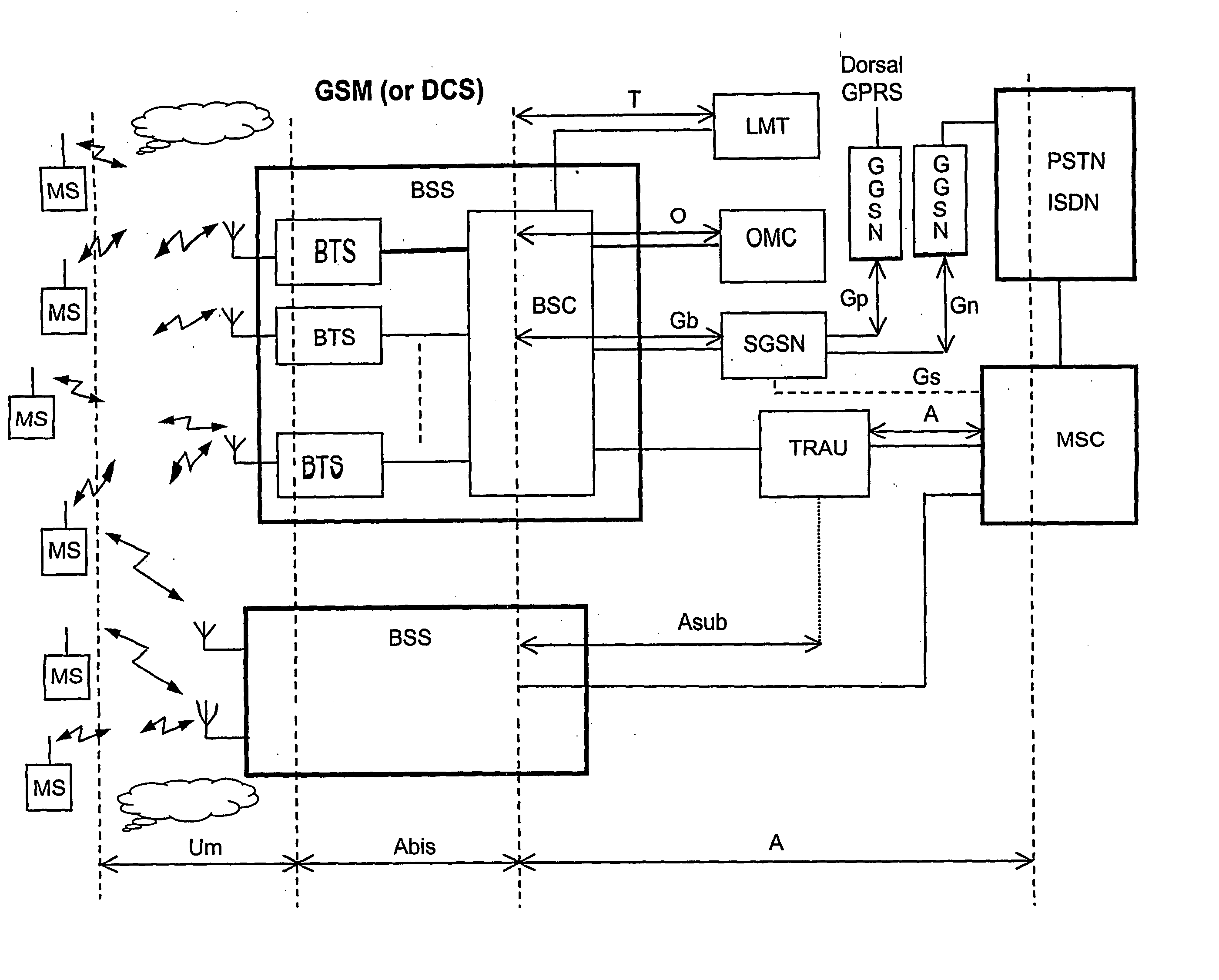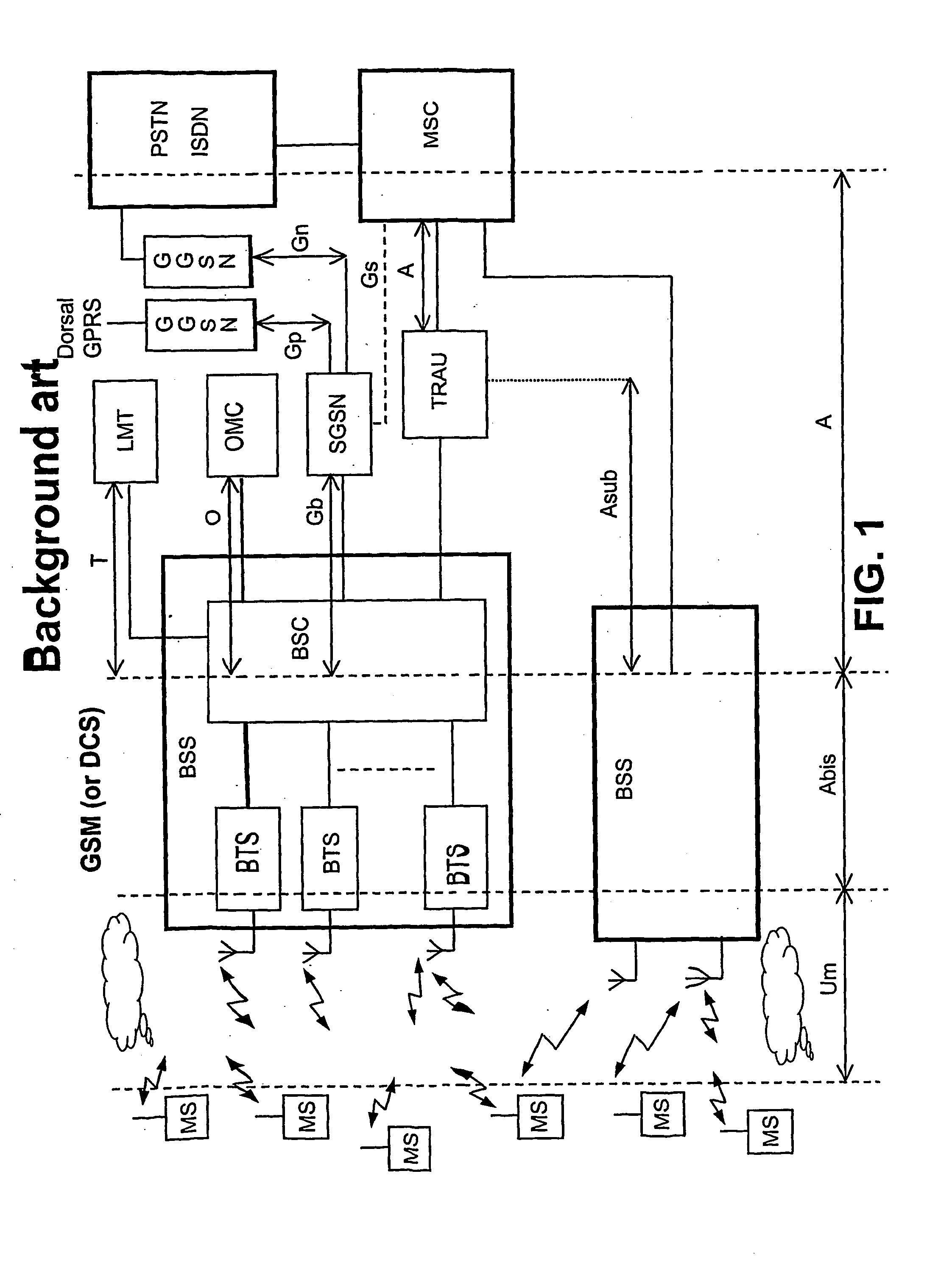Controller for gsm and 3g base transceiver stations in a gsm core network with external handover possibility from 3g cells to gsm cells trasparent to gsm core network
a technology of gsm and base transceiver, which is applied in the direction of transmission, electrical equipment, telephonic communication, etc., can solve the problems of large investment in 3g systems, significant compatibility problems, and insufficient resources
- Summary
- Abstract
- Description
- Claims
- Application Information
AI Technical Summary
Benefits of technology
Problems solved by technology
Method used
Image
Examples
Embodiment Construction
[0072]FIG. 3 shows a mobile transceiver scenario including GGSM cells and TD-SCDMA cells, for simplicity the borders of cell are not shown in the figure. The GSM cells are served by as many base transceiver stations BTS of the GSM (DCS) system, while the TD-SCDMA cells are served by as many base transceiver stations BTSC (Base Transceiver Station for TD-SCDMA) of the TD-SCDMA system, called also Node B. Since any cell of a system is served by its own BTS / BTSC, the term cell and BTS / BTSC may be considered as synonyms. Since the frequency bands are separately employed by both the systems, a same geographical cell can have a radio coverage from both the systems at the same time, and therefore a same geographical area may be covered at the same time by one GSM cell and by one TD-SCDMA cell. A set of mobile units is radio connected with a relevant base station among those visible in the figure. The mobiles can be radio access single technology or profitably they can support both the tech...
PUM
 Login to View More
Login to View More Abstract
Description
Claims
Application Information
 Login to View More
Login to View More - R&D
- Intellectual Property
- Life Sciences
- Materials
- Tech Scout
- Unparalleled Data Quality
- Higher Quality Content
- 60% Fewer Hallucinations
Browse by: Latest US Patents, China's latest patents, Technical Efficacy Thesaurus, Application Domain, Technology Topic, Popular Technical Reports.
© 2025 PatSnap. All rights reserved.Legal|Privacy policy|Modern Slavery Act Transparency Statement|Sitemap|About US| Contact US: help@patsnap.com



